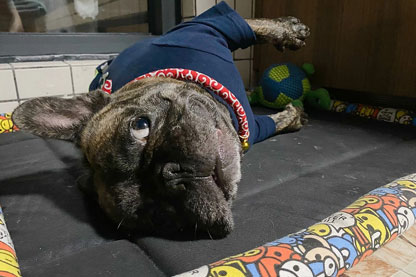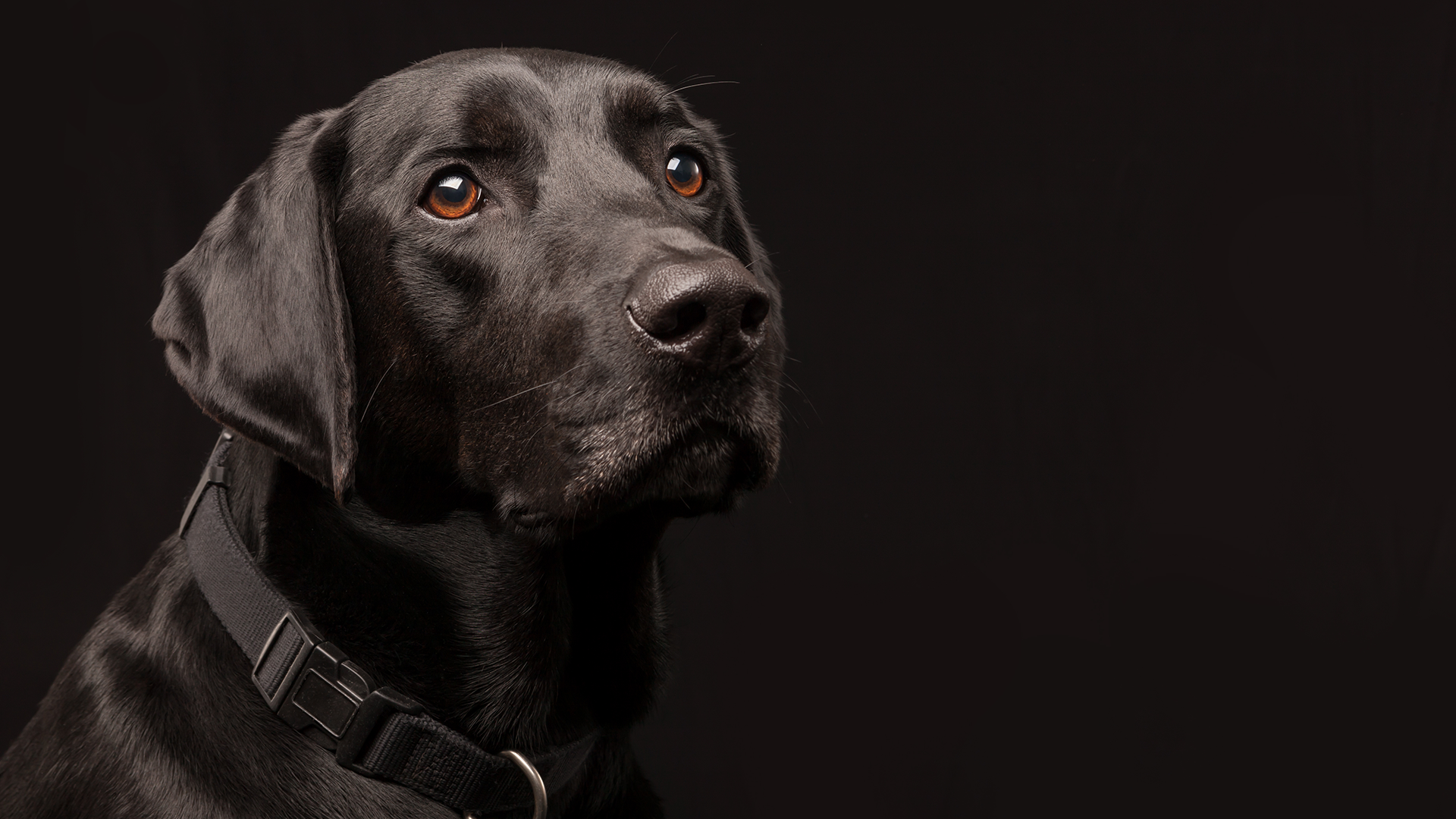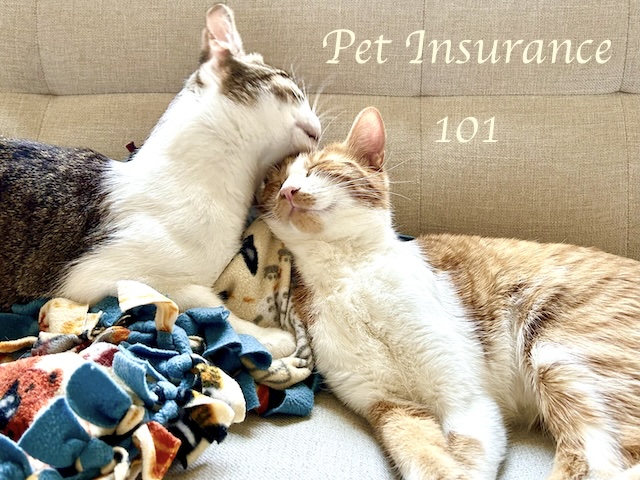
One day, Ms. W returned home and found that her beloved pet dog was not in good condition. Despite being tired from the day, she picked up the dog and rushed to the pet hospital.

After a thorough diagnosis, the dog was diagnosed with eczema and gastroenteritis. Two visits to the doctor cost several thousand yuan in medical expenses. Despite meticulous care for her beloved dog, including the finest dog food and toys, which contributed to her substantial monthly expenses, the medical bills still weighed heavily on Ms. W. It was then that she suddenly remembered the pet insurance that a friend with a similar pet family had mentioned during a recent gathering.
After taking her pet dog home and settling it down, Ms. W immediately began researching pet insurance with the awareness of a good pet owner.

Global Pet Insurance Status
Sweden
Sweden is the first country in the world to issue pet insurance. By 2015, the premium scale of the pet insurance market exceeded 300 million euros (about 264 million pounds), and the current pet insurance participation rate has reached 40%.
U.K.
The UK pet insurance market is currently the most developed globally, with a history of nearly 70 years. According to market research firm Mintel, the UK’s pet insurance market reached £976 million in 2015 and is projected to grow to £1.6 billion by 2021, making it the world’s largest pet insurance market.
In 2017, the UK had approximately 15 million pets, 22% of which were insured, with premiums totaling £1 billion (approximately RMB 9 billion). Currently, the pet insurance coverage rate in the UK is approximately 25%.
Pet insurance penetration in the UK is high, but the range of options remains limited, primarily targeting cat and dog health insurance. Pet death insurance (which provides compensation to pet owners in the event of a pet’s death due to an accident or illness) and pet third-party liability insurance (which primarily protects pet owners against liability for personal injury, death, or property damage caused by their pets to third parties) account for a smaller proportion of the market. German insurer Allianz, primarily selling pet insurance through its Petplan brand, holds the largest market share in the UK, reaching 41%. British insurer RSA holds 28%. Currently, there are approximately 80 pet insurance brands in the UK market, 15% more than four or five years ago. According to the Association of British Insurers, pet insurance claims paid out in the UK reached £1.106 billion in 2017.
Japan
Japan boasts one of the highest insurance rates in the world, and pet owners are keen on purchasing various types of insurance. Japanese pet insurance can cover up to 90% of medical expenses for pets over a certain age, with premiums varying depending on the breed and age of the pet. Generally, before signing a policy, the insurance company will conduct a health check on the pet, and the owner will receive a health certificate. If the pet becomes ill and requires treatment, the pet can be treated at a hospital that has an agreement with the insurance company, which will then reduce or waive medical expenses.
Japan has approximately 20 million pets, 6.3% of which have insurance, generating approximately 50 billion yen (3 billion RMB) in premiums, which are growing by nearly 20% annually. Ten insurance companies currently offer pet insurance in Japan, covering 50% to 90% of medical expenses for pets over a certain age. While insurance is also available for a variety of pets, including rabbits and birds, 90% of insured pets are dogs. Premiums vary depending on the pet’s breed and age.
Anicom, a Japanese company specializing in pet insurance, holds a 60% market share. Over 98% of its revenue comes from pet insurance. It has been profitable since its IPO in 2010, with premium revenue reaching 28 billion yen in 2017, and an average growth rate of over 16% over the past three years. Anicom’s key advantage lies in its expanding network of partner hospitals. Through its data collection, it now covers the names and locations of 15,000 pet hospitals, along with pet age groups, disease rates, and more. Based on this data, it establishes its own pet medical management system to prevent over-medication.
Germany
While not very popular in the UK, pet third-party liability insurance is relatively common in Germany, reflecting the status of pets in the country. For example, dogs in Germany can ride public transportation, enter public places like supermarkets and hotels, and even accompany their owners to work, fully enjoying the rights of German citizens. However, if a dog causes personal injury or property damage while out and about, the owner is fully liable. Therefore, prudent Germans generally purchase third-party liability insurance for their dogs.
USA
The American Pet Products Manufacturers Association (APPMA) released a report on pet consumption in the United States in 2018, citing annual pet insurance revenue of $4 billion. Data from the American Pet Products Association shows that there are nearly 90 million pet dogs and 94 million pet cats in the country.
There’s a relatively wide selection of insurance options available. Pet insurance companies offer coverage not only for cats and dogs, but also for birds and some exotic species. The average annual cost of pet insurance is approximately $250, with monthly premiums ranging from $10 to $30 depending on the pet’s age. Premiums don’t increase based on previous claims.
Currently, there are two main types of pet insurance in the United States: comprehensive insurance, which includes health and accident benefits, and health insurance, which is similar to human medical insurance and offers coverage for canine cancer, for example, up to $15,000. Some animal hospitals also offer optional plans that cover preventative medical care, including routine checkups and vaccinations, as well as X-rays, blood tests, and dental cleanings, with some discounts. However, major surgeries are not covered.

The development history of pet insurance in China
In 2004, Huatai Insurance launched the “Well-off Family” comprehensive family insurance, which included pet liability in the scope of protection in the form of supplementary insurance;
In 2005, Pacific Property and Casualty Insurance launched the Beijing Dog Owner Liability Insurance, the only primary insurance policy in the Beijing insurance market.
In 2008, Taiping Property and Casualty Insurance Company launched pet third-party liability insurance;
In September 2014, the China People’s Property and Casualty Company Limited, the China Animal Husbandry Association and other institutions launched the “Pet Le Bao” family pet health insurance plan, which is also the first national pet medical insurance system in China.
In September 2014, Ping An Insurance launched a pet insurance product called “Pet Bao” and subsequently carried out related business cooperation with multiple institutions;
In 2015, China Life Insurance launched “Chonglebao”. It developed offline hospitals in a B2B model, charged hospitals a certain agency fee, and authorized hospitals to sell insurance.
In April 2015, Minan Insurance Shanghai Branch and others signed and launched the “Minan “Pet Joy Worry-free” Baobeita Pet Insurance Purchase Agreement”;
In December 2015, Taikang Online and 58xinchong jointly launched Taikang’s “Xinchong Insurance” to provide medical insurance for pet dogs sold on the 58xinchong platform;
In November 2016, Chong Ai Bao and Ping An Insurance jointly launched “Chong Ai Bao”;
In recent years, more and more insurance companies have been paying attention to and promoting pet insurance.

According to the “2020 China Pet Healthcare Industry White Paper,” the number of dogs and cats in China has reached 100 million, a 1.7% increase from 2019, and the consumer market has reached 206.5 billion yuan. Among pet consumer spending subcategories, pet medical treatment expenditures saw the fastest growth, increasing by 6.2% year-on-year. This rapidly growing pet population has created a huge demand for pet healthcare, and the pet healthcare industry, which is closely linked to pet insurance, has entered a period of rapid growth. In 2019, the pet healthcare industry exceeded 40 billion yuan and is projected to exceed 130 billion yuan by 2025.
Meanwhile, pet insurance coverage for pet healthcare in my country is less than 1%, with premiums under 100 million yuan. These current and projected data indicate that China’s pet insurance market has enormous untapped potential and scale. Despite increasing interest and participation from insurance companies, the market’s growth remains below expectations. Key to this lies the pain points faced by both insurance companies and pet owners.
Pain points of supply-side insurance companies
Pain point 1 : Identifying pets
In foreign markets, the processes for breeding and selling live pets are relatively standardized, and pets are implanted with microchips and codes from birth, eliminating the difficulty for insurance companies to identify them. In contrast, the domestic pet market in China is highly chaotic, making effective identification difficult for insurance companies.
Some pet owners have several dogs of the same breed and coat color. They only have one insurance policy and file a claim for any sick dog because all the dogs look similar. This creates significant challenges for insurance companies. Microchipping, a popular international method, is the most scientific, but widespread adoption is time-consuming due to a host of challenges, including technical development and equipment deployment. Furthermore, low acceptance of microchipping among Chinese pet owners is a limiting factor.
Currently, several insurance companies have introduced AI-powered nose print recognition and verification technology. Pet owners simply need to take a clear, front-facing photo of their pet, and once AI-powered verification is passed, they can conveniently and hassle-freely file a claim. A pet’s nose print, like a human fingerprint, remains unique and immutable, persisting throughout its lifespan. Accurately identifying pets through nose print recognition is expected to effectively enhance product risk management and lower the barrier to entry. Currently, pet nose print recognition technology boasts a success rate exceeding 90%, and future applications are expected for urban pet management and pet loss scenarios.
Pain Point 2 : Controlling the chaotic pet healthcare market
The qualifications of veterinary hospitals vary widely, high-quality medical resources are scarce, drug pricing is opaque and highly variable, and the entire industry lacks systematic oversight and management. Pets often undergo a series of tests, some of which are often unnecessary. Furthermore, pet owners often lack clarity on which medication is most effective, which injections are intended to treat, and whether or not to take nutritional supplements, and what types of supplements to take. This makes it difficult to effectively manage medical costs.
Many insurance companies are adopting a strategy of establishing a presence in the back-end market, creating lists of designated veterinary hospitals, and collaborating with multiple veterinary hospitals. This strategy aligns with Japan’s Anicom, which has expanded its network of partner hospitals to 15,000 and then established its own veterinary medical management system based on this data to prevent over-medicalization. Hopefully, with the continuous advancement of internet and big data technologies, this integration with veterinary hospitals can be rolled out soon.
Pain Point 3 : How to avoid competition from homogeneous products
Currently, pet insurance products on the market are highly homogenized. Insurance companies need to consider whether to enter the homogenized market and compete through price wars, claims services, and value-added medical services, or to explore the path of differentiated product competition.
Pet insurance products are often sold through various plans. With the increasing online adoption of the insurance industry, is the use of internet technology to launch various protection modules, allowing pet owners to select their desired coverage (such as pet death, pet medical care, third-party liability, and foster care allowances) and the amount of coverage, thereby creating customized products, a path to differentiation? Of course, this also places higher demands on insurance companies’ back-end data management.
At the same time, insurance companies are also trying to combine pet insurance with property insurance and travel insurance, so that products and services can gradually move from homogeneity to diversification and personalization.
Pain Point 4 : Educating pet owners about insurance awareness and promoting insurance products
The fact that pet insurance coverage in my country is less than 1% suggests that the supply side hasn’t yet fully met the demand side with adequate publicity and product availability, leaving a significant gap between supply and demand. How to provide more comprehensive insurance awareness education and product promotion, particularly scenario-based education, to raise pet insurance participation rates to levels seen in Japan, the UK, and even Sweden, and stimulate exponential growth in the pet insurance market, presents a challenge for conscientious insurance companies.
The pain points of pet owners on the demand side
Pain Point 1 : Rising Pet Healthcare Costs
In my country, 50% of pets seek medical attention each year, with 30% spending an average of 1,500 yuan, representing 30% of total pet-keeping expenses. Many pet owners report spending a considerable amount on medical care for their cats and dogs, ranging from several thousand yuan to tens of thousands. This expense is particularly significant for young working professionals who enjoy pet companionship.
A pet hospital revealed to the media: “In terms of annual expenses, in addition to routine expenses such as deworming, vaccinations, and teeth cleaning, there are also expenses for other sudden, acute and chronic diseases. The average annual medical expenses for a pet are about 3,000 yuan.”
On August 17, 2020, Mr. C’s cat, Garfield, experienced decreased urination and a poor appetite. He was taken to a designated hospital and diagnosed with bladder stones, undergoing surgery. On August 26, Garfield was diagnosed with acute gastroenteritis. The bladder stones cost 5,000 yuan, and the gastroenteritis cost 3,500 yuan.
These industry data, as well as examples from pet owners’ own pets’ medical visits, show that pet medical costs are constantly rising. Pet owners are in urgent need of financial services to address these costs.
Pain point 2 : Blind spots in understanding pet insurance
The survey shows that 62.0% of pet owners in my country said they do not understand the pet insurance products on the market, and 40.7% do not know how to choose suitable products.
“I spent 500 yuan on the dog and 5,000 yuan on the veterinary bill.” Z, a pet owner born in the 1980s, bought a schnauzer from an online shopping platform. To her surprise, the puppy developed a cold and fever soon after arriving home, and even worse, a skin disease. Z took the dog to a veterinary clinic for treatment, and after nearly a month of treatment, the cost reached over 5,000 yuan—ten times the purchase price. “The dog’s value skyrocketed.” Knowing the high cost of pet veterinary care, she stumbled upon a pet health insurance promotion on the homepage of a platform and immediately placed an order.
Pain point 3 : Difficulty in claiming compensation after purchasing pet insurance
Under the current market model, pet medical insurance policies specify designated hospitals for claims processing, and some require treatment at designated hospitals for reimbursement. Some pet insurance policies differentiate between these types, with a 60% reimbursement ratio for treatment at designated hospitals and a 40% reimbursement ratio for treatment at non-designated hospitals. Premiums for pet medical insurance on the market generally range from 300 to 600 yuan, with annual reimbursement ranging from 8,000 to 10,000 yuan. Insurance companies also have deductibles for pet insurance, and some minor illnesses may not be covered if the cost of treatment does not meet the deductible.
While pet medical insurance covers death, disability, and illness, most policies exclude expenses related to pregnancy, miscarriage, sterilization, cesarean section, and physical examinations. This has led many pet owners to lament that pet insurance claims are just as difficult as those made by humans.
If insurance companies, after solving the pain point of pet identity identification, focus on using Internet technology and modern mobile payment methods to effectively solve the pain point of “difficulty in claims settlement”, it will become a booster to promote the rapid development of the pet insurance market.
Outlook for the foreseeable future
An international consulting firm predicts that China’s pet market is expected to reach 472.3 billion yuan in 2023, with growth expected to remain above 20% for the next few years. Over the past decade, the rapid growth of the pet food industry has driven the overall development and progress of the industry, transitioning from a simple market where dogs eat what people eat to a market where high-end pet food and health supplements are available. Furthermore, the continued growth in sales of pet vaccines and deworming services suggests that pet healthcare services are entering their nascent stages.
At the same time, with the aging population, the lack of companionship among middle-aged families, and the growing psychological needs of the younger generation, the importance of pet companionship in people’s lives will continue to grow. This is already reflected in various data on the “pet economy.” Insurance companies need to strive for breakthroughs in the “pet economy,” addressing pain points and creating new growth areas. They must provide high-quality financial risk services, address the public’s risk and even psychological needs, and serve as a stabilizing force for society.

After completing her initial research, Ms. W discussed pet insurance products on the market with her friends in a WeChat group. They offered some advice:
The China Insurance Industry Association website can check the qualifications of pet insurance
Read and understand the insurance terms carefully
The waiting period (observation period) varies from insurance company to insurance company. It is different for cancer, common diseases, or different dog breeds. It is important to consider the current situation of your pet comprehensively.
Pay attention to the hospitals and cities where you can claim compensation
Beware of irregular pet hospital binding consumptionWe look forward to the continuous enrichment of pet insurance products and services through technological upgrades, which will not only address the needs of pet owners, but also promote the sustainable development of the pet insurance market, and protect the pet partners we all care about, making everyone a winner .



